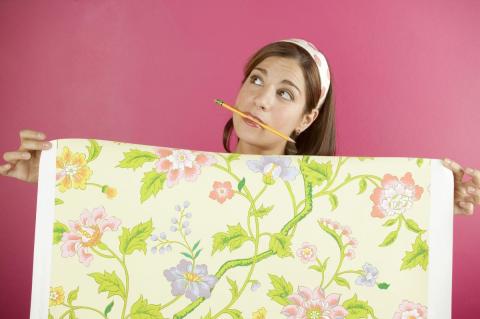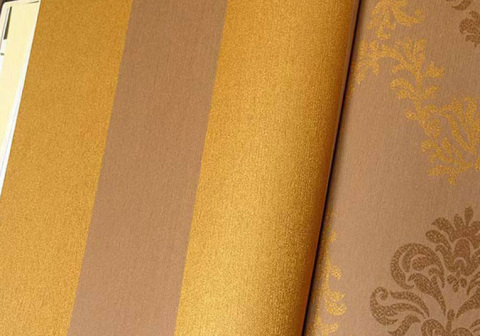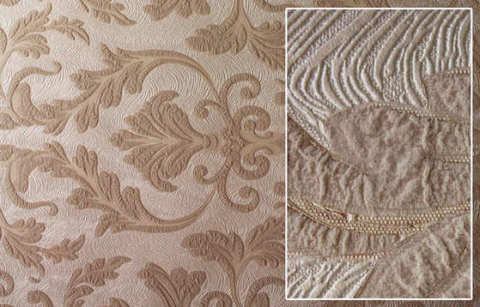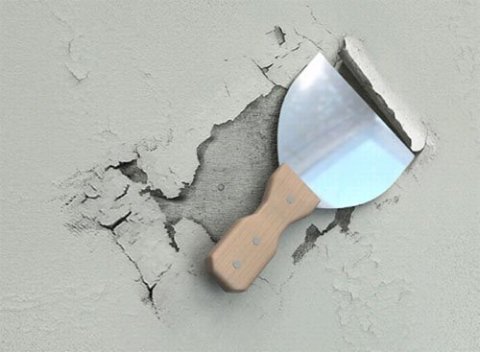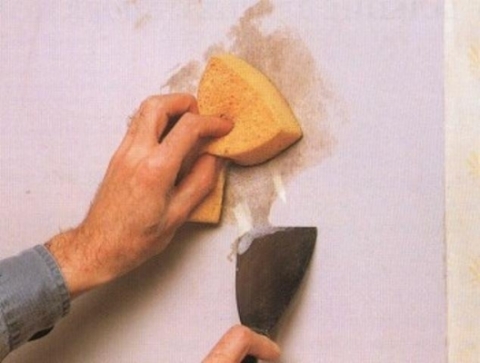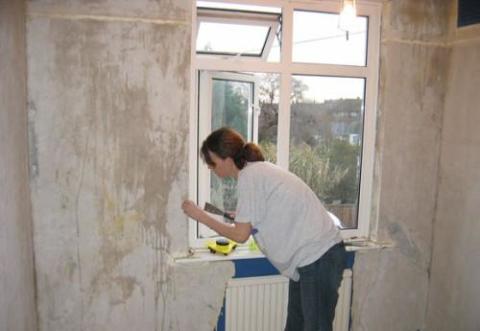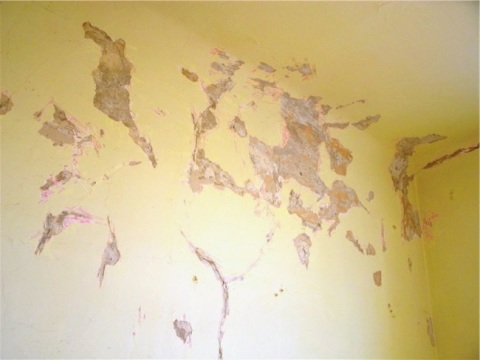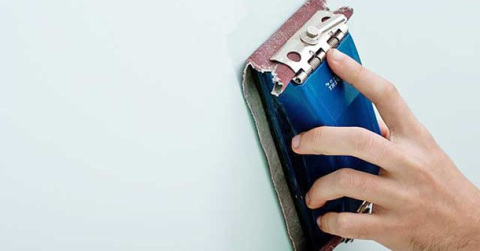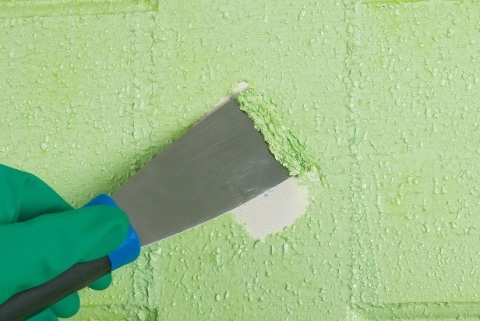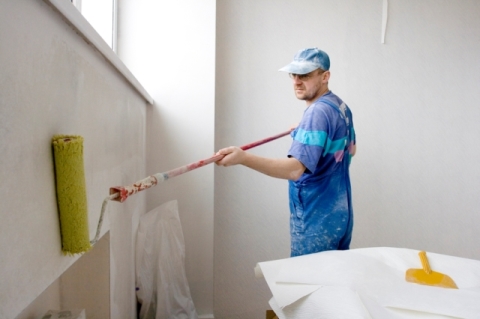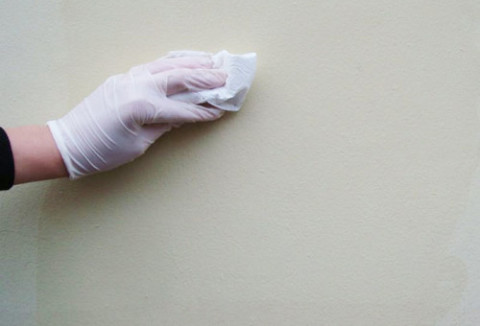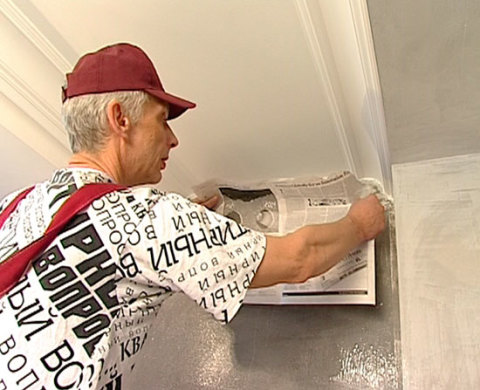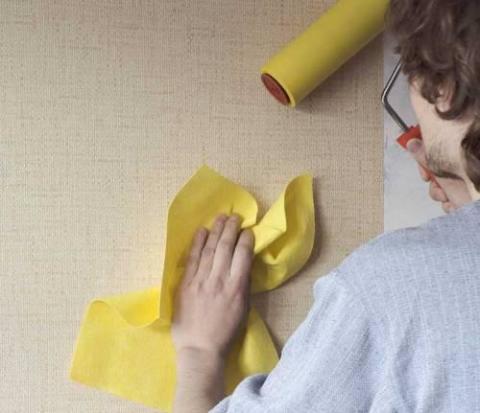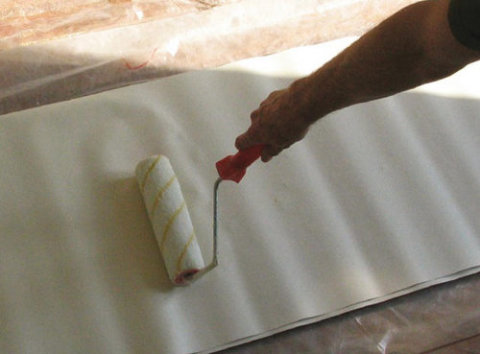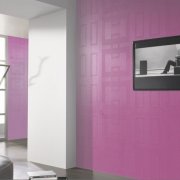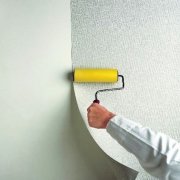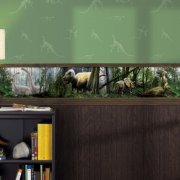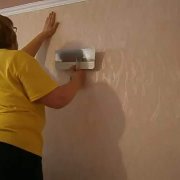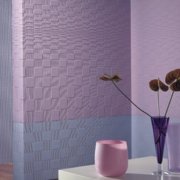Is it possible to glue wallpaper on water-based paint? Yes or no?
The repair in the house, in particular the wallpapering, must be taken seriously - the attractiveness and durability of the interior depends on it. If the walls in the apartment were previously covered with water emulsion, and you do not know whether it is possible to glue wallpaper on water-based paint, then in our article we will try to answer all questions related to this topic.
The content of the article
Surface Requirements for Wallpaper Sticker
To begin with, for different types of wallpapers, and walls, you need to cook in different ways:
- Thin wallpapers (paper, fabric, silk-screen printing, etc.).
This view usually has no more than two layers - the base and the front layer, so all wall defects will appear most clearly. This is especially true for smooth paintings. Under such wallpapers, surface preparation needs to be paid more attention: to putty in the pits (seeHow to putty walls under the wallpaper yourself), cut off the bulges, clean the marks from the spatula with fine sandpaper.
Textured embossed wallpaper is able to hide only minor defects, but you should not hope for it, since in natural or side lighting, flaws will still be visible. Very uneven walls are recommended to be completely leveled with putty.
- Thick wallpaper (vinyl, non-woven, paintable and so on).
Three-layer thick wallpaper can hide significant wall defects. Small holes from the fasteners, small differences between the layers of the old coating and other irregularities will hardly affect the appearance of the relief paintings.
Important! It must be remembered that larger defects will not allow the wallpaper to adhere tightly to the wall. And this is fraught with the appearance of air bubbles between the wall and the canvas, which can lead to its deformation and delamination.
This view works almost the same as putty - with its help you can fix defects without resorting to the first stage of leveling the walls. Of course, in the presence of deep potholes, cracks or sudden changes, you still have to use mortars, at least for reasons of practicality and economy.
The price of liquid wallpaper is quite high, and when fixing large irregularities, the consumption of wallpaper mixture will increase significantly, well, the strength of this material is lower than that of the same Rothgips. Over time, wallpaper can splay out of deep potholes on the wall, which will make it necessary to make a new repair.
Determine the type of water-based paint
It happens that the owners are not sure what type of paint was used before. To determine this is quite simple: you need to use a spatula or scraper to try to clean a small area of the wall.
If the coating leaves in layers or small pieces, it is oily or acrylic paint. The water emulsion will be strewed with powder or exfoliate along with plaster, putty (if any).
Now, let's talk about the types of water emulsions, since the set of measures for its preparation depends on what your wall is painted on.
PVA-based water dispersion paint (polyvinyl acetate)
It has the least abrasion resistance among other analogues.The paint has a porous surface, and if applied incorrectly, it is prone to exfoliation. It is applied to the wall with at least two thin layers, perfectly washed off with hot water.
You can glue wallpaper on a water-based polyvinyl acetate paint, but in places where there is peeling or peeling, it is better to wash off the paint. To do this is not difficult with your own hands, a sponge or a rag to generously wet the wall, and wait a while. After that, the paint will easily move away from the wall.
If the remaining water emulsion adheres firmly to the wall, it must be cleaned with sandpaper from dirt, dust, and various small irregularities should be removed. Cracks or small defects will have to be repaired with a putty, on which, after drying, you need to go with a fine emery cloth to remove traces of the spatula.
Then it is necessary to cover the surface with a deep penetration primer - at least in two layers (seePrimer for wallpaper: which one to choose and how to use) This will give extra strength to the coating.
Is it possible to glue wallpaper on water-based paint without the risk of peeling the paintings with it? Experts say that it is possible - but only if a good quality polyvinyl acetate emulsion was used.
If the walls are covered with paint from a cheap price group, then it is advisable to completely remove it, since even the use of a deeply penetrating primer will not guarantee a long-term and high-quality coating.
Polymer-based water-based paints
These include the following paints:
- Acrylic
- Latex.
- Silicate.
A distinctive feature of paints is high surface strength, not afraid of moisture and mechanical damage.
Is it possible to stick wallpaper on the water-based paint of these types without preparation of the base? Yes, but only if the walls are not damaged, the entire surface is smooth, strong and uniform.
When there are chips, delaminations or cracks, then such places must be thoroughly cleaned with a spatula, remove everything that is easy to leave, and cover the swings with putty. After drying, the surface should be cleaned with sandpaper, removing strips from the spatula.
If this is not done, then there remains the risk of peeling the glued wallpaper along with the old coating.
Important! If there is a need to completely clean the surface, then a special wash for polymer paint is on sale, which destroys the coating, after which it is easily removed with a scraper or spatula.
An understandable instruction is attached to the wash, following the recommendations in which, removing the old paint will not be difficult.
And we repeat once again that any surfaces after cleaning, filling and sanding must be covered with a reinforced primer twice, allowing each layer to absorb and dry well. Wallpaper can be glued at least one day after priming.
If it is not possible to buy such a primer, then you can add PVA glue (1: 1) to the usual composition, or saturate the wall with good quality wallpaper glue with antibacterial additives and the same PVA twice.
Some of the nuances when deciding a wallpaper on a water emulsion
The walls under the wallpaper are cleaned of dust, dirt with a brush, and wiped with a damp cloth to remove dust.
So:
- If the wall is too smooth, it is recommended to go over it with coarse-grained emery paper, this will give the surface roughness and provide better adhesion to the wallpaper.
- If you are not sure about getting a high-quality coating, then you can make a test for the adhesion of the wallpaper to the wall surface.Take a simple newspaper or cut a small piece of the selected wallpaper, stick it on an inconspicuous part of the wall, wait for it to dry completely and try to tear it off.
Ease of peeling will show that you need to work on the surface additionally.
- Another simple way to determine the strength of the coating: take masking tape, stick a piece on the wall and tear it with a sharp movement. If there are particles of paint on the strip, then cleaning the wall is required.
- Even with a strong old coating, you should not often tear off the canvas from the wall with a sticker to eliminate air bubbles or distortions. This can cause tearing off the paint and additional repair of this area. This is especially true for heavy wallpapers.
- The accumulation of air is best removed with a rubber roller or soft cloth.
- For better adhesion, apply glue not only to the canvas, but also to the wall.
- Glue mixture get only good quality, with high adhesive ability. Cheap staff may not give the desired result, and it is possible that all the work will have to be redone.
- Do not glue thin light wallpapers on a dark wall: the color will shine through the canvases; under such wallpapers, the surface must be puttied and thoroughly cleaned with sandpaper.
Conclusion
That’s basically all that concerns the question: "Is it possible to glue wallpaper on water dispersion paint?". We hope that we have sufficiently covered this process. For completeness, we suggest watching thematic photos and videos in this article. Good luck
